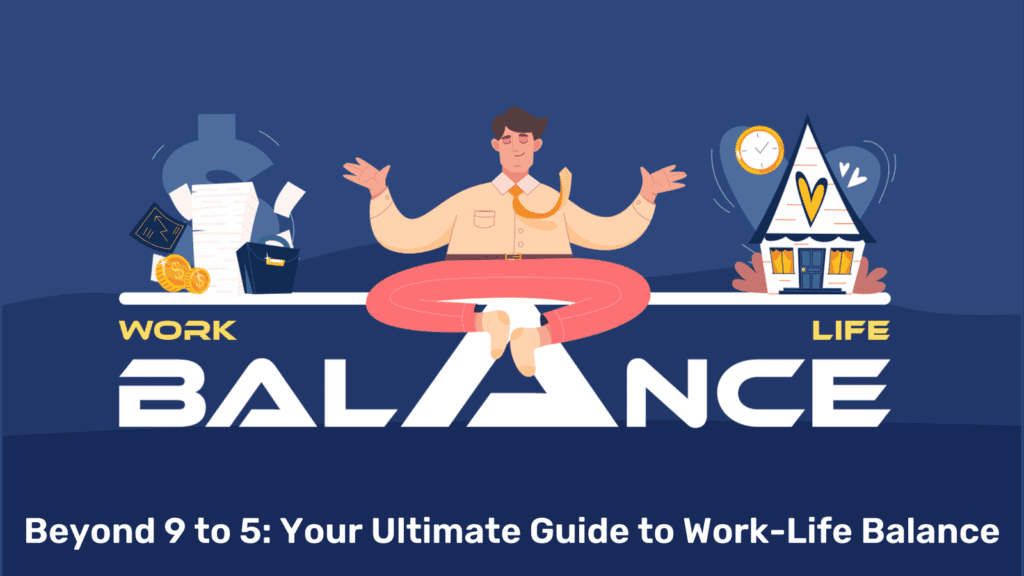The Ultimate Guide to Work-Life Balance in 2025
Introduction
Achieving work–life balance has always been a challenge, but in 2025, the landscape of work and personal life is evolving rapidly. With the rise of remote work, flexible schedules, and digital advancements, employees and entrepreneurs alike must navigate new ways to maintain a healthy balance. This guide explores the latest strategies, tools, and mindset shifts to help you achieve true work-life balance in 2025.
The Changing Nature of Work in 2025
Technology has drastically altered the way we work, making remote work and hybrid schedules more common. While this flexibility offers freedom, it can also blur the lines between professional and personal life. Understanding the evolving workplace landscape is key to creating a sustainable balance.
Key Trends:
- Remote and Hybrid Work – More companies are embracing work-from-home models, reducing commute times but increasing digital burnout.
- AI and Automation – Many repetitive tasks are being automated, allowing employees to focus on more meaningful work.
- Four-Day Workweek Movement – Some organizations are experimenting with shorter workweeks for enhanced productivity and well-being.
- Increased Focus on Mental Health – Employers are prioritizing employee wellness through mental health benefits and wellness programs.
Strategies for Achieving Work-Life Balance
1. Set Clear Boundaries
One of the biggest challenges in 2025 is the lack of separation between work and home life. Establish clear work hours and stick to them. Turn off notifications after work and create a dedicated workspace at home.
2. Prioritize Time Management
Effective time management is crucial for maintaining balance. Use techniques like:
- Time Blocking: Allocate specific hours for work, family, and personal activities.
- The Pomodoro Technique: Work in focused 25-minute intervals with short breaks.
- Task Prioritization: Use productivity apps to manage tasks and deadlines efficiently.
3. Embrace Technology Wisely
Technology can both help and hinder work-life balance. Use productivity tools such as:
- Project Management Apps (Asana, Trello, Monday.com) to streamline work.
- AI-Powered Assistants (ChatGPT, Notion AI) to automate tasks.
- Wellness Apps (Headspace, Calm) to incorporate mindfulness and stress management.
4. Learn to Say No
Setting boundaries also means knowing when to decline additional work. Overcommitting leads to burnout. Communicate clearly with your employer or clients about your capacity.
5. Take Regular Breaks
Short breaks throughout the day can boost productivity and mental clarity. Step away from your desk, take a walk, or practice deep breathing exercises to refresh your mind.
6. Incorporate Physical and Mental Wellness
A balanced life includes taking care of both your body and mind. In 2025, wellness trends like virtual fitness classes, meditation apps, and mental health check-ins are more accessible than ever. Prioritize:
- Exercise – At least 30 minutes of physical activity per day.
- Sleep – Aim for 7-9 hours of quality sleep.
- Mindfulness – Practice daily meditation or journaling to reduce stress.
7. Leverage Work Flexibility
If your job allows, take advantage of flexible work arrangements. Whether it’s working from a co-working space or adjusting your hours to fit personal needs, flexibility can improve overall well-being.
8. Plan Vacations and Downtime
Many people neglect time off due to workload demands. In 2025, companies are recognizing the value of employee rest. Take advantage of vacation policies and ensure you unplug completely during breaks.

Conclusion
Work-life balance in 2025 requires intentional effort and smart strategies. By setting boundaries, prioritizing wellness, and leveraging technology wisely, you can create a fulfilling career while maintaining a rich personal life. Remember, balance is not about perfection but about making conscious choices that align with your well-being and happiness.


